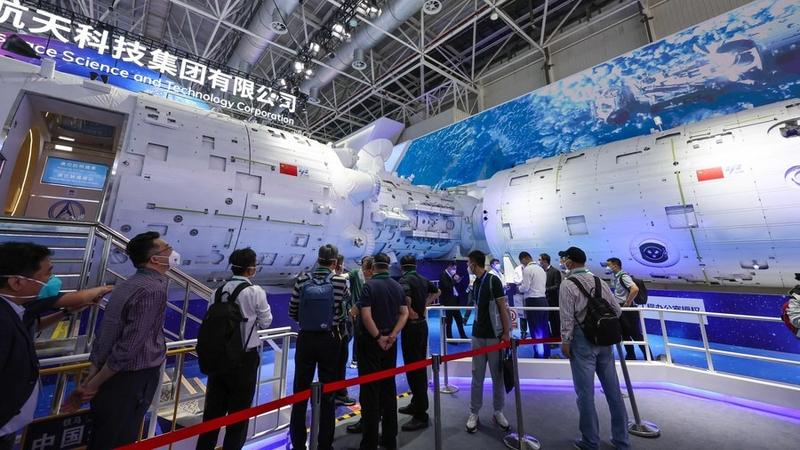 In this file photo dated Nov 9, 2022, visitors view the 1:1 model of China's space station combination showcased at the 14th China International Aviation and Aerospace Exhibition in Zhuhai, south China's Guangdong province. (PHOTO / XINHUA)
In this file photo dated Nov 9, 2022, visitors view the 1:1 model of China's space station combination showcased at the 14th China International Aviation and Aerospace Exhibition in Zhuhai, south China's Guangdong province. (PHOTO / XINHUA)
Total 110 science and technology projects are being undertaken on board China's Tiangong space station and some of them have made substantial progress, according to a space official.
Lin Xiqiang, deputy director of the China Manned Space Agency, said at a news conference in Beijing on Friday afternoon that these projects cover a wide range of research fields including life science, micro-gravity physics and material science.
China began to construct its permanent space station in April 2021 by launching the first, and central, component of the massive station, the Tianhe core module
"By now, scientists and engineers have received nearly 100 terabits of raw experimental data and about 300 experimental samples," he said. "For instance, scientists have realized the full life-circle plantation of paddy, and their research findings in the functional gene modifications are likely to accelerate the development and improvement of new paddy types."
READ MORE: Astronauts meet in Tiangong space station core module
In the field of space medicine, studies carried out inside the Chinese space station have included the effects of weightlessness and cosmic radiation during long-term spaceflights on astronauts' health, activities and capabilities. Scientists have had new findings on the functions of astronauts' cardiovascular and bone systems and have used such findings to devise new technologies and methods to maintain crew members' health, the official said.
In addition, it is worth mentioning that the operation of the country's Stirling thermoelectric convertor realized its in-orbit verification on board the Tiangong station. The heat-to-electricity convertor showed an internationally advanced conversion efficiency during its smooth operation, according to Lin.
China began to construct its permanent space station in April 2021 by launching the first, and central, component of the massive station, the Tianhe core module.
READ MORE: Tiangong space station open to world
In the second half of 2022, the Wentian and Mengtian science modules were launched to dock with the Tianhe, completing the space station's construction phase.
Orbiting Earth about 400 kilometers above the ground, Tiangong now weighs nearly 100 metric tons and is expected to operate at least 10 years as a national space-based laboratory.
The colossal orbital outpost has received five groups of Chinese astronauts. The current inhabitants, three astronauts in the Shenzhou XVI mission, arrived on May 30 and are scheduled to stay there until early November.
Their journey is the maiden flight of China's third generation of astronauts and the first time a Chinese civilian has traveled to space.


